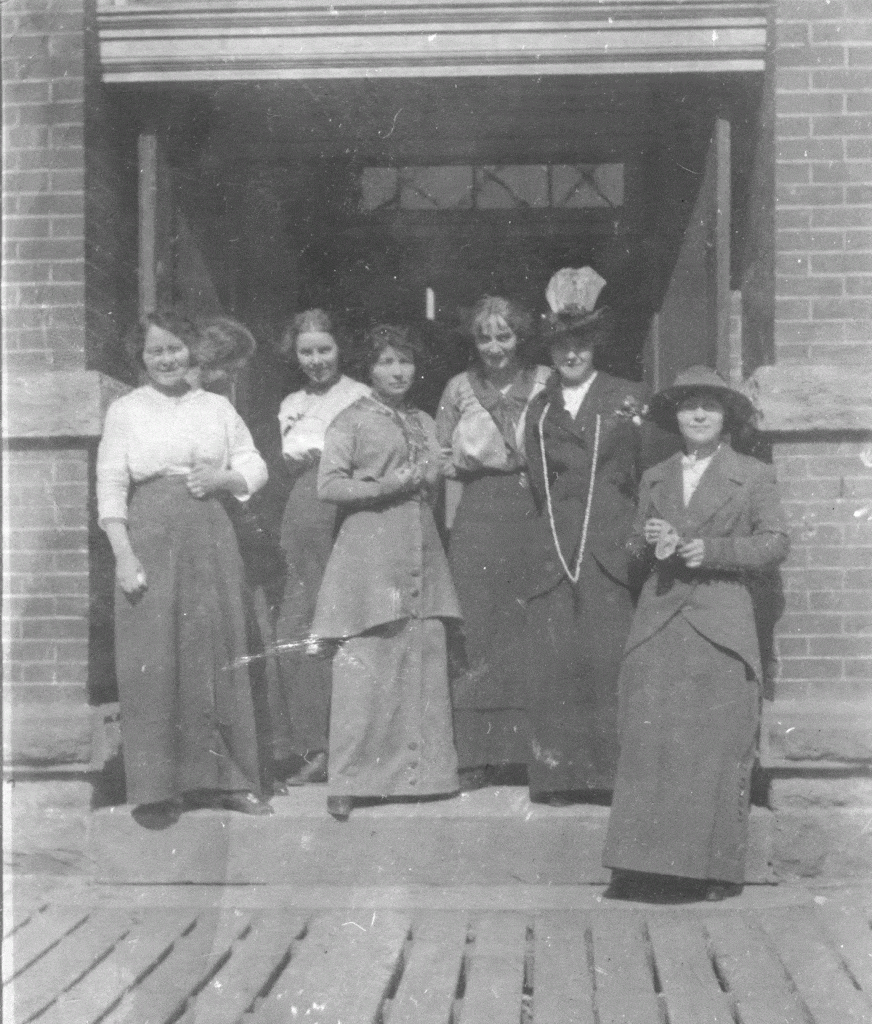
Credit: Park City Museum, Himes-Buck Digital Collection
It’s no secret that strong, powerful women have called Park City home since the town first sprung up in the 1870s. Strong, powerful women are even stronger and more powerful together, evidenced by the accomplishments of Park City’s Woman’s Athenaeum (also known as the Park City Athenaeum Club), first organized in 1897.
Women’s clubs like the Athenaeum first emerged as social organizations in the mid-1800s. However, by the dawn of the Progressive Era – a period in United States history beginning in the 1880s characterized by sweeping reforms at the community, state, and federal level – women’s clubs took on a decidedly more political role—even if most clubwomen could not yet officially vote. Clubwomen championed projects that improved the quality of public life, including waste and sanitation management, better educational opportunities for women and children, and food safety.
Women’s clubs also played an important role in the fight for women’s suffrage. In 1914, the General Federation of Women’s Club (GFWC), a highly influential league of over 3,000 women’s clubs throughout the United States, released a statement endorsing “the principle of political equality regardless of sex.”[1] The clubs represented by the GFWC included the Park City Women’s Athenaeum.
On Monday, February 23, 1920, the Woman’s Athenaeum celebrated its 23rd anniversary at its annual Organization Day luncheon. That year, however, they also celebrated another momentous occasion—the passage of the 19th Amendment. Nine months earlier, in June 1919, Congress officially voted to adopt a Constitutional amendment prohibiting voter discrimination on the basis of sex, extending suffrage to women across the United States.
While Utah women had the right to vote much earlier than most of their compatriots throughout the country (Utah women voted as early as 1870, although suffrage was subsequently revoked—and then reinstated—in 1887 and 1895, respectively), they understood the importance of protecting this political freedom in the Constitution. They also had a keen sense of women’s clubs roles in creating meaningful social change, and how the right to vote made their impact even stronger.
In a speech given at the Woman’s Athenaeum celebration, Parkite clubwoman Mrs. Sheen expounded the virtues of the modern clubwoman. She saved the clubwoman’s greatest achievement for last: “when she desires reform now, she has the power of her own vote behind her.”[2]
Explore the Park City Museum’s latest traveling exhibit,
“A Woman Speaking to Women: The Political Art of Nina Allender.” The
exhibit will be on view in the Museum’s Tozer Gallery through January 13.
[1] Patricia Miller, “The General Federation of Women’s Clubs and the Fight for Women’s Suffrage,” Turning Point Suffragist Memorial, https://suffragistmemorial.org/gfwc-and-suffrage/.
[2] “Organization Day,” Park Record (Park City, Utah), February 27, 1920.